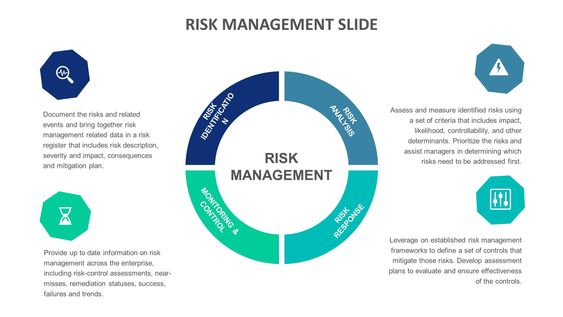Introduction to Risk Management Framework
Risk management framework is a structured approach to managing risk that helps organizations identify, assess, prioritize, and manage risk across their operations. This article provides an overview of the key components of a risk management framework.
Risk Identification
The first step in a risk management framework is to identify potential risks. This involves a systematic review of the organization’s operations and processes to identify potential threats and vulnerabilities.
Risk Assessment
Once potential risks are identified, the next step is to assess the likelihood and impact of each risk. This involves analyzing the probability of the risk occurring and the potential impact on the organization if it does occur.
Risk Prioritization
Based on the results of the risk assessment, risks are then prioritized based on their potential impact and likelihood. This allows organizations to focus their resources on managing the most significant risks.
Risk Mitigation
The next step in a risk management framework is to develop strategies to mitigate or manage identified risks. This may involve implementing controls, developing policies and procedures, or changing operational processes.
Risk Monitoring
Once risk mitigation strategies are implemented, it is important to monitor the effectiveness of these measures. This involves ongoing monitoring of risk indicators to ensure that controls remain effective and risks are managed appropriately.
Risk Reporting
Effective risk reporting is essential for risk management framework. This involves communicating risks and risk management activities to stakeholders, including senior management, board members, and external stakeholders.
Integration with Business Operations
A successful risk management framework should be integrated into the organization’s business operations. This means that risk management is not a separate function, but rather a part of the organization’s day-to-day operations.
Continuous Improvement
A risk management framework is not a one-time activity. It requires continuous improvement to ensure that risks are managed effectively over time. This includes ongoing monitoring and review of the risk management framework, as well as regular updates to address emerging risks and changing business conditions.
You might find these FREE courses useful
Conclusion
A risk management framework is an essential tool for organizations looking to proactively manage potential risks. By following the key components outlined in this article, organizations can develop a comprehensive risk management framework that helps protect against potential threats and vulnerabilities. Continuous improvement is essential to ensure that the framework remains effective over time.





